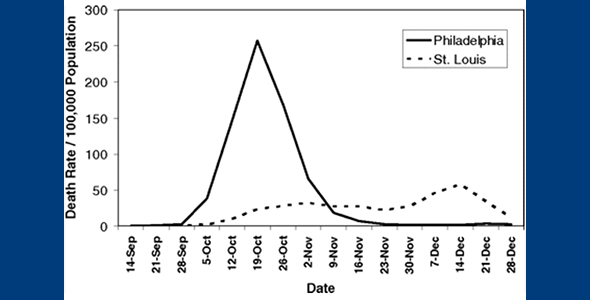Dr. Hahn advocates for a more proactive microbiology lab to closely monitor the types of CF infections and to determine which antibiotics each infection is most susceptible. In the Children’s National study, researchers analyzed each sample in two different ways: standard lab culture and molecular testing.
Study Shows How Breastfeeding Protects Newborns from Resistant Organisms
The gut microbiome of infants is dominated by Bifidobacterium, a species that produce acids that suppress the growth of other taxa of bacteria that might be more likely to contain antimicrobial resistance genes.
How Public Health Policies Saved Citizens in St. Louis During the 1918 Flu Pandemic
If geography truly is destiny, this saying was never more true than during the influenza pandemic of 1918. Where you lived often determined if you survived, with high fatality rates in large cities, overcrowded military bases, and the congested refugee camps that housed the displaced during World War 1.
The 1918 Influenza Pandemic: A Global Catastrophe that Arrived in 3 Waves
One hundred years ago this year, an influenza pandemic spread around the globe at an alarming rate. When the influenza season ended in 1919, one out of every three human beings, or about 600 million people, suffered from the infection, called the Spanish flu, and at least 50 million people did not survive it.
The Value of Diagnostics in Combatting Antimicrobial Resistance – A Public Health Problem
At this year’s World Anti-Microbial Resistance Congress, Dr. Tristan Timbrook delivered a...
Lindsay Denny Discusses the Critical Role of WASH in Preventing Infectious Diseases and Fighting Antimicrobial Resistance
WASH, which stands for water, sanitation, and hygiene, are basic...






